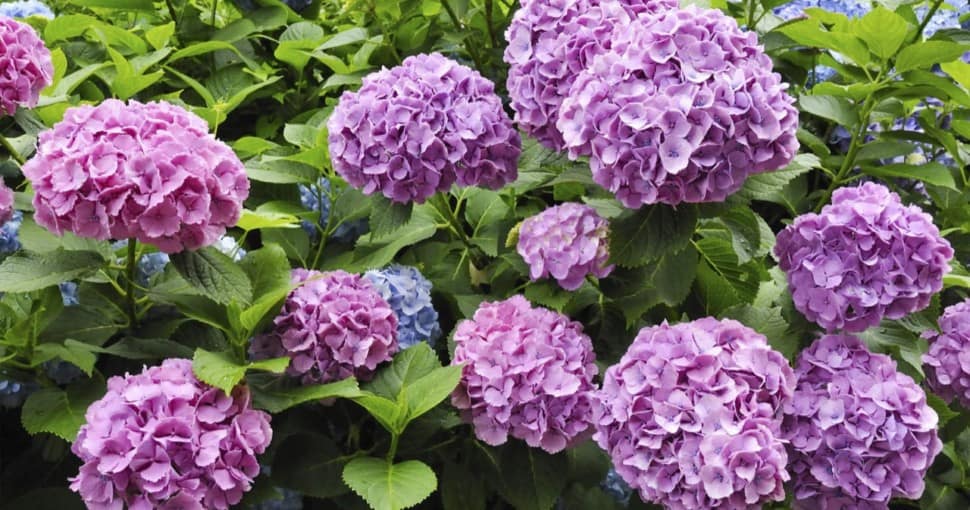Hydrangeas are one of those plants that makes a lasting impression because of the beautiful, snow globe-sized flower bunches. There are many varieties of hydrangeas, like lacecaps (H. macrophylla), that produce these large, awe-inspiring flowers.
Contents
- 1. Chinese Snowball Shrub (Viburnum macrocephalum)
- 2. Lilac (Syringa vulgaris)
- 3. Spirea Shrub (Spiraea cantoniensis)
- 4. Butterfly Bush (Buddleja Davidii)
- 5. European Cranberry Bush (Viburnum spp.)
- 6. Mountain Laurel (Kalmia latifolia)
- 7. Egyptian Star Flower (Pentas lanceolata)
- 8. Crape Myrtle (Lagerstroemia indica)
Hydrangeas are shrubs, climbers, or trees that can grow 3 to 6 feet tall, depending on the variety. Most hydrangeas have dark green, simple leaves. However, some hydrangeas, like the oakleaf hydrangea, have leaves of other shapes.
Hydrangeas are easily identified, but that doesn’t mean there aren’t similar-looking plants. In fact, there are several other trees and shrubs that are easily mistaken for hydrangeas, including:
- Chinese snowball shrub – the flowers have a similar shape and size
- Common lilac – the flowers also grow in bunches
- Spirea shrub – the flowers look like pinnacle hydrangeas
- Butterfly bush – similar flower structures and bundles as hydrangeas
- European cranberry bush – the flowers and shrub look like hydrangeas
- Mountain laurel – the rose-colored flower cones look like hydrangeas
- Egyptian star flower – the flower groupings look like hydrangeas
- Crape myrtle – similar flower colors and shape to hydrangeas
For those curious minds wondering how these plants are similar to hydrangeas and how you can tell them apart, look no further. Below is a list with a description of the similarities and differences between the above plants and hydrangeas.
Related: Are Hydrangeas Poisonous?
1. Chinese Snowball Shrub (Viburnum macrocephalum)
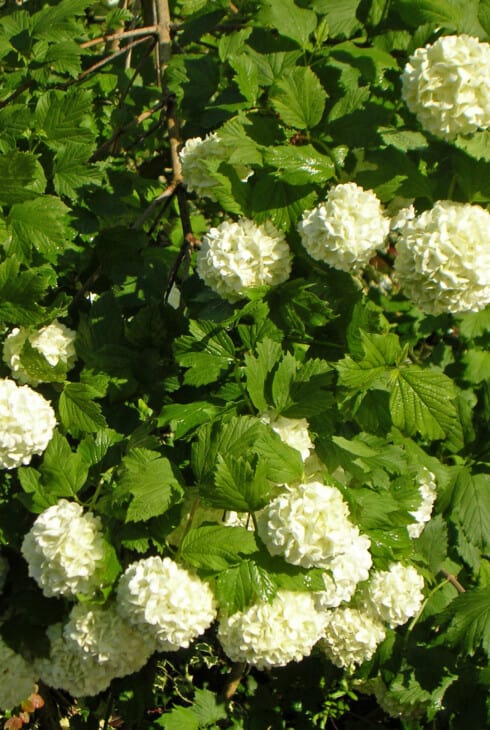
The Chinese snowball shrub is similar in size to hydrangeas and grows between 6 and 10 feet tall. The Chinese snowball shrub has pure white flower bundles like hydrangeas. As the name suggests, Chinese snowball shrubs are native to China, but they can tolerate similar growing conditions as hydrangeas.
Chinese snowball shrubs also have similar-looking leaves to hydrangeas. Their dark green simple leaves look almost identical to the leaves of a hydrangea. Although the Chinese snowball shrub has some similarities with hydrangeas, there are also several differences between the two, making it easy to tell them apart.
The Chinese snowball shrubs bloom earlier than hydrangeas, between April and May. Chinese snowball bushes also only produce flowers of true white, whereas hydrangeas can produce different-colored flowers depending on the soil pH and variety.
2. Lilac (Syringa vulgaris)
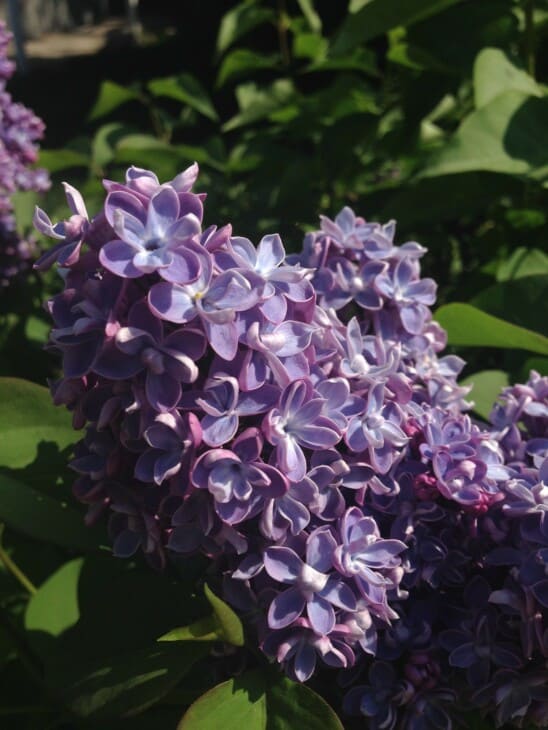
Another plant that produces similar-looking flowers to hydrangeas is the common lilac. These pretty flowering shrubs are also expected to find where hydrangeas grow, and their flowers have similar characteristics. Lilacs and hydrangeas both bloom in the spring, but hydrangeas bloom for longer.
Lilacs also produce red, purple, pink, and white flowers, which are some of the same colors as hydrangeas. Lilacs also produce small flowers that bundle together, just like hydrangeas. But their flowers grow in cone shapes, while hydrangeas form globes.
The leaves of lilacs are also a darker green than hydrangeas and are more heart-shaped. The entire plant only grows a few feet high, while hydrangeas can reach heights of up to 6 feet. This makes it relatively easy to spot the differences between lilacs and hydrangeas, even if their flowers look similar.
Related: When are Lilacs In Season? | Are Lilacs Poisonous?
3. Spirea Shrub (Spiraea cantoniensis)
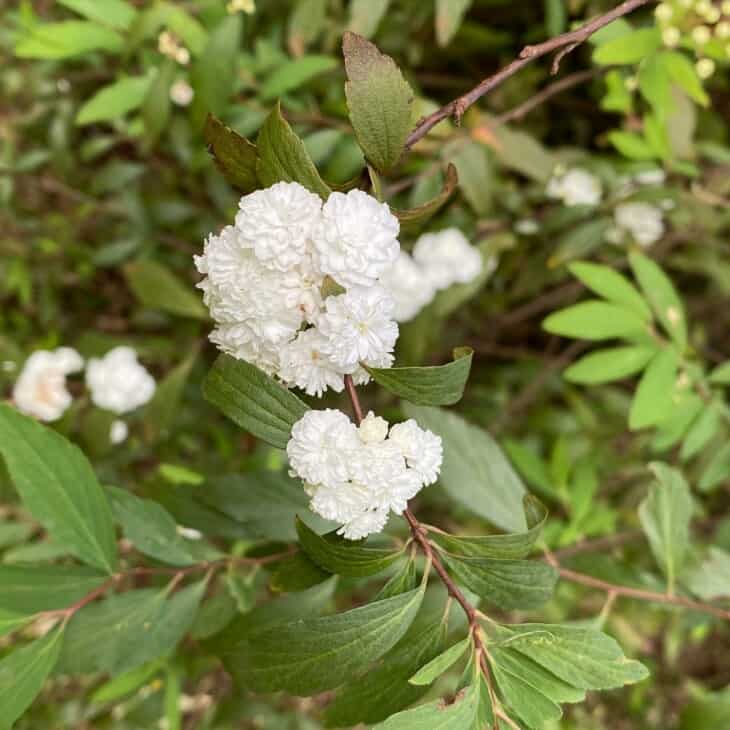
Spirea shrubs also look similar to hydrangeas. These shrubs grow between 4 and 6 feet tall and wide, similar to some hydrangea species. They have white-colored flowers that grow together in bouquet-like bunches, just like hydrangeas. There are also different colored spiraeas, like red and yellow.
The blooms appear in June and last for a few months into Autumn, which is why many people assume they are a type of hydrangea. The flowers of spirea are smaller than those of hydrangeas, though. They also have long stemples which stick out above the flowers.
Some spirea varieties produce yellow leaves with the same shape and color as hydrangeas, but you can tell them apart based on their color.
4. Butterfly Bush (Buddleja Davidii)
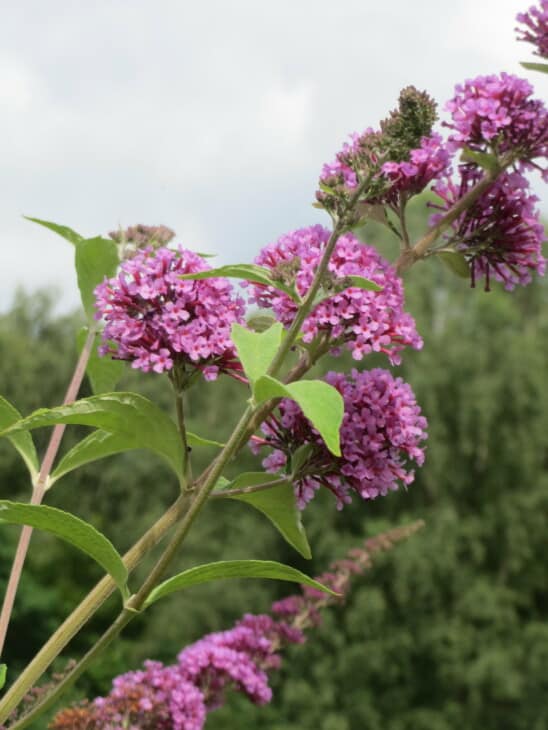
It is very easy to mistake a butterfly bush for a hydrangea since the shrub looks similar. A butterfly bush has the same dark green colored leaves as a hydrangea and can grow up to 15 feet high, making it slightly bigger than a hydrangea. The small flowers come in colors like white, purple, and pink.
A butterfly bush also flowers at the same time as a hydrangea, making one believe it is the same plant. The flowers also grow in bundles, but the bundles are cone-shaped rather than globes. The leaves also look somewhat different, as they are longer and thinner than the leaves of a hydrangea shrub.
5. European Cranberry Bush (Viburnum spp.)
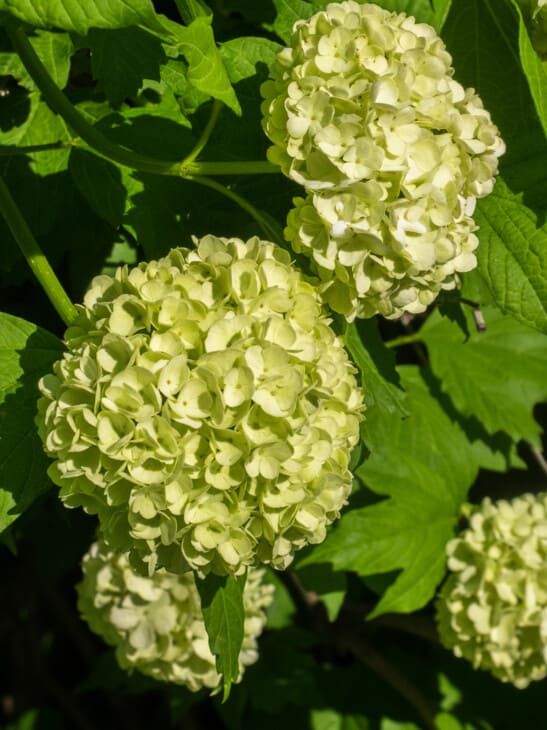
The European cranberry bush is another plant one can mistake for a hydrangea when viewed from a distance. This multi-seasonal plant is considered an invasive species in America. Still, the flowers make it so many people don’t mind the species.
European cranberry bushes grow about 4 to 6 feet tall and produce vibrant, white-colored flower bundles. These bundles have the same shape as hydrangeas, which is why many confuse them. But European cranberry bushes have oak-shaped leaves, a feature different from hydrangeas.
European cranberry bushes also produce bright red berries in fall, which is another feature they possess that sets them apart from hydrangeas.
6. Mountain Laurel (Kalmia latifolia)
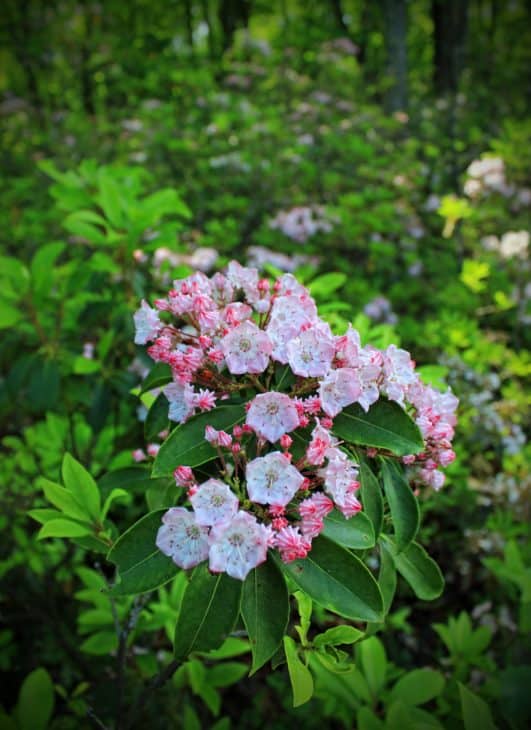
Mountain laurels have similar characteristics to hydrangeas, which is why one may mistake them for the latter when looking from a distance. Mountain laurels are shrubs that grow between 8 and 20 feet high, and 12 feet wide. Mountain laurels bloom in the spring, around the same time as hydrangeas.
Their pink, white, or red flowers grow in bundles resembling hydrangeas. However, the bundles aren’t as neatly organized into globes or spikes. The leaves on a mountain laurel have the same color and shape as hydrangeas, which makes it easier to mistake these plants for each other.
But the flowers of a mountain laurel don’t resemble hydrangeas since they are bigger and have a lace pattern at the end of each petal. This is what makes it possible to distinguish one shrub from another regarding hydrangeas and mountain laurels.
7. Egyptian Star Flower (Pentas lanceolata)
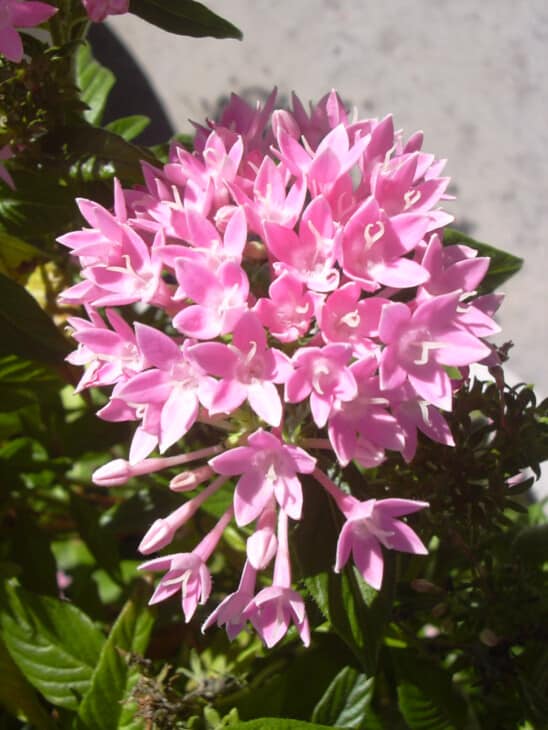
The Egyptian star flower is another shrub easily mistaken for a hydrangea when in bloom. This shrub grows only 2 to 3 feet tall, making it slightly smaller than a hydrangea. The flowers are different from hydrangeas, but they also grow in round, globe-like bunches.
Egyptian star flowers bloom in the early spring and keep their blooms until late in the summer, which is another similarity between them and hydrangeas. The leaves are the same color and somewhat similar in shape, making it even easier to mistake Egyptian star flowers for hydrangeas.
The primary visual differences between these plants are that the leaves of Egyptian star flowers are heavily veined, and the flowers have a recognizable star shape. This is how one can tell Egyptian star flowers apart from hydrangeas.
8. Crape Myrtle (Lagerstroemia indica)
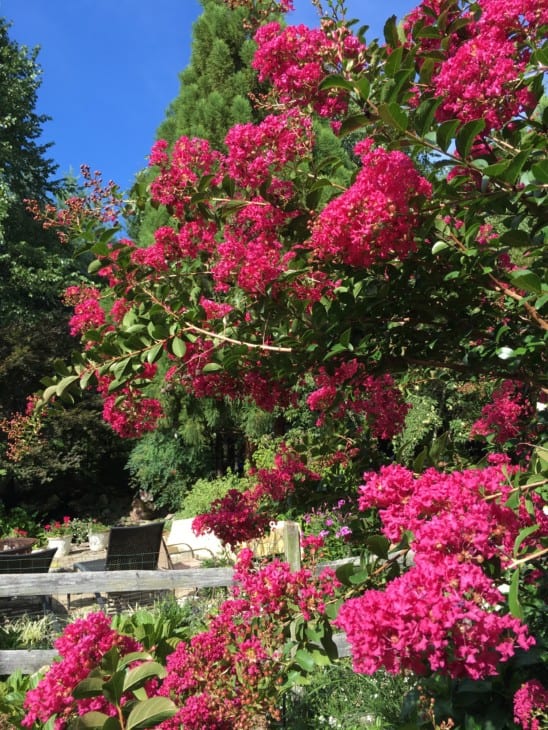
Crape myrtles come in many varieties, from trees growing 20 feet tall to shrubs growing 5 feet tall. The colorful flowers (red, pink, white, and purple) appear in spring and adorn the plant until summer. The flowers grow in bunches, making it easy to mistake these shrubs for hydrangeas.
Related: 7 Types of Crepe Myrtle Trees
The leaves are also the same shape and color as hydrangeas, although they are more veined and usually curl slightly inwards. The flower bunches also form in more of a pinnacle shape instead of the globe shape of most hydrangeas.
The individual flowers also look different from hydrangeas since they have more of a creped appearance and look almost like crinkled paper rather than flowers. Crepe myrtle is a good wind-resistant tree option.

